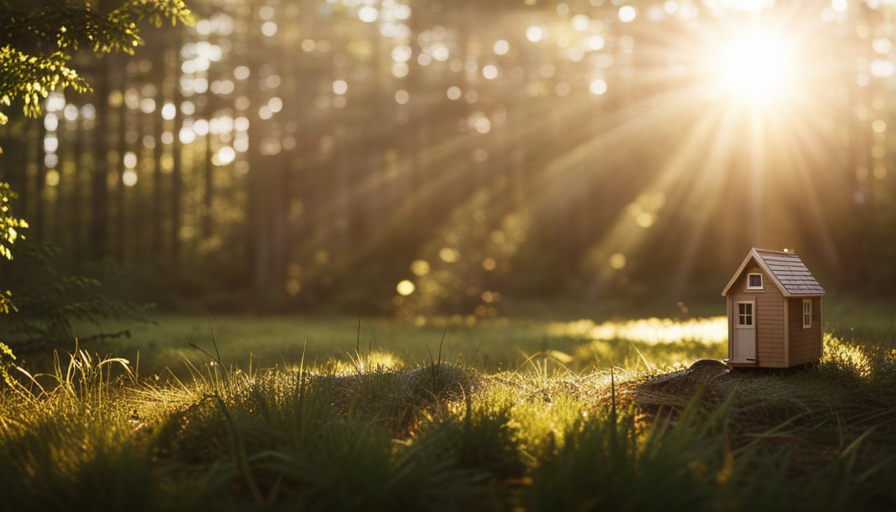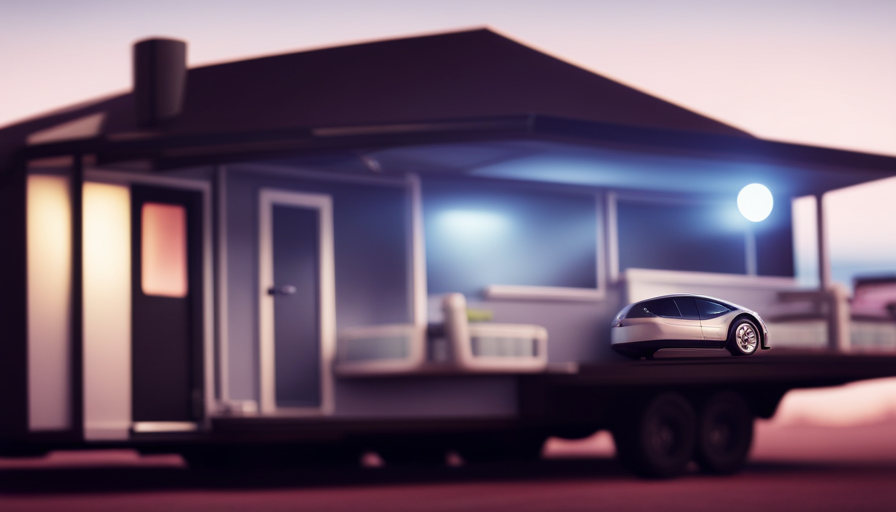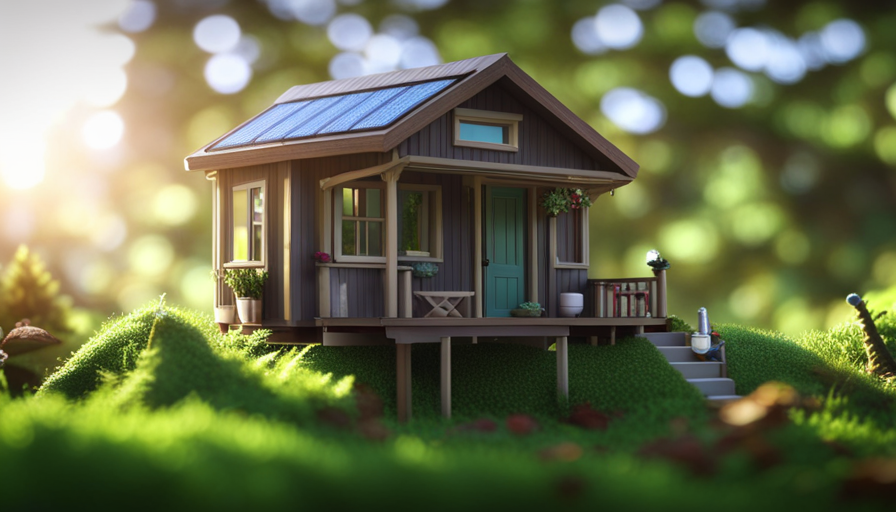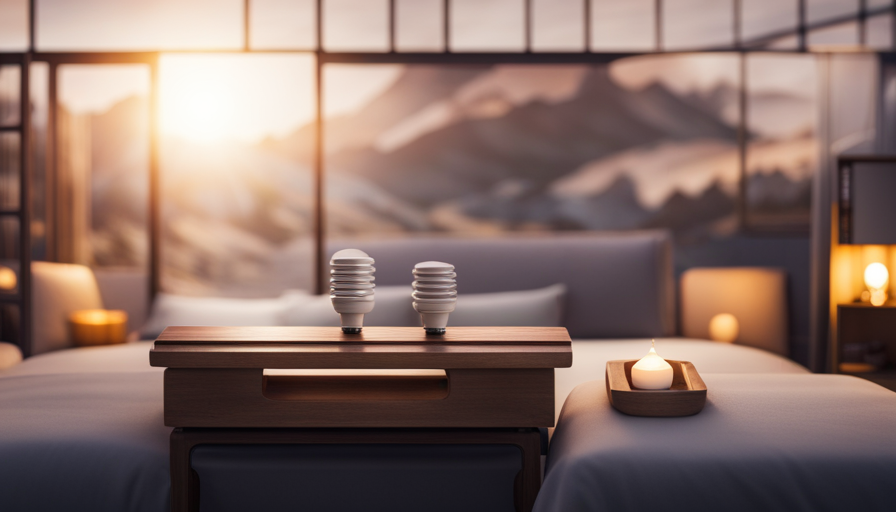Were you aware that the United States is home to more than 10,000 tiny houses? These diminutive and efficient dwellings have surged in popularity as an alternative to traditional housing, providing people with the opportunity to scale down and embrace a simpler, eco-friendlier way of living.
But one of the biggest challenges for tiny house owners is finding the perfect parking spot. That’s where I come in. My name is Ethan Waldman, and I have dedicated my expertise to helping tiny house owners find their dream parking spot. With years of experience and a keen eye for detail, I have successfully helped countless individuals locate the ideal parking spot for their tiny homes.
In this article, I will share my journey into the world of tiny houses, the importance of finding the right parking spot, and provide resources and tools to help you find your own tiny house parking spot.
So, let’s dive in and discover the future of tiny house parking together!
Key Takeaways
- Ethan Waldman is an experienced expert in locating ideal parking spots for tiny houses.
- Factors to consider for finding the right parking spot include zoning regulations, utilities, and amenities.
- Networking with other tiny house enthusiasts can provide valuable recommendations for parking options.
- Limited space availability and zoning restrictions are common hurdles for tiny house owners.
The Rise of Tiny Houses as a Housing Alternative
If you’re tired of the traditional housing market and looking for a more affordable and unique option, have you ever considered the rise of tiny houses as a housing alternative?
With the affordability crisis hitting many cities, more and more people are turning to tiny houses as a solution. These small, compact homes offer a sustainable living option that not only reduces the financial burden but also minimizes our carbon footprint.
Tiny houses are designed to maximize space efficiency without sacrificing comfort, making them perfect for those who want to live simpler and more environmentally friendly lives.
Now, let’s delve into Ethan Waldman’s journey into the world of tiny houses and discover how he became an advocate for this innovative housing trend.
Ethan Waldman’s Journey into the World of Tiny Houses
Embarking on my journey into the world of tiny homes, I found myself navigating uncharted territory. As I delved deeper into this alternative housing movement, I realized the importance of finding the right parking spot for my tiny house.
To educate others on the subject, I started my blog, where I share my experiences and insights into tiny house parking regulations. Through extensive research and personal trials, I’ve become knowledgeable about the various zoning laws, building codes, and permit requirements that govern where tiny houses can be parked. It’s crucial to understand these regulations to avoid legal issues and ensure a safe and comfortable living situation.
In my next section, I’ll discuss the importance of finding the right parking spot and the factors to consider in order to create a successful tiny house lifestyle.
The Importance of Finding the Right Parking Spot
Finding the right spot to park your tiny home is crucial for creating a successful and fulfilling lifestyle in this alternative housing movement. Not only does it provide a sense of security for your investment, but it also has a significant impact on the community around you. When searching for secure parking, it’s essential to consider factors such as zoning regulations, utilities, and proximity to amenities. To visualize the importance of finding the right parking spot, consider the following table:
| Factors to Consider | Benefits |
|---|---|
| Zoning Regulations | Comply with local laws and regulations |
| Utilities | Access to water, electricity, and waste disposal |
| Amenities | Convenience and quality of life |
By carefully selecting a parking spot that meets these criteria, you can ensure a more enjoyable and sustainable living experience. With my expertise in finding ideal parking spots, I can guide you through the process, offering valuable insights and tips along the way. Let’s explore how to maximize the potential of your tiny home by finding the perfect parking spot.
Ethan Waldman’s Expertise in Finding Ideal Parking Spots
As someone who has spent years researching and exploring tiny house parking options, I can confidently say that Ethan Waldman is an expert in finding ideal parking spots. His in-depth knowledge of local regulations and zoning laws allows him to navigate the complex world of tiny house parking with ease.
Additionally, he offers invaluable tips for finding affordable and suitable parking options, ensuring that individuals can find a place to park their tiny homes without breaking the bank.
His research and knowledge of local regulations
Explore the wealth of information available to you regarding local regulations for tiny house parking, deepening your understanding of the intricate nuances that may affect your ability to find a suitable spot for your dream home.
Understanding the local zoning laws is crucial as it determines where you can legally park your tiny house. Additionally, it’s important to consider the level of community support for tiny house living in a particular area. Some communities are more open and welcoming to tiny houses, while others may have stricter regulations or be less accepting.
When researching local regulations, keep the following in mind:
-
Zoning requirements: Familiarize yourself with the specific zoning regulations for each potential parking spot.
-
Building codes: Determine if your tiny house complies with the local building codes to avoid any issues.
-
Permits and licenses: Check if you need any permits or licenses to legally park your tiny house.
-
Community attitudes: Research the community’s attitudes towards tiny houses and consider if they align with your own values and needs.
By understanding these local regulations, you can navigate the process of finding affordable and suitable parking options for your tiny house.
Tips for finding affordable and suitable parking options
Consider these valuable tips to help you discover the perfect, budget-friendly spot to park your dream tiny house.
When it comes to finding suitable locations for your tiny house, there are a few key strategies to keep in mind. First, consider reaching out to local zoning authorities to understand the regulations and restrictions in your desired area. This will help you narrow down your search and avoid any potential legal issues.
Additionally, think outside the box and explore unconventional options such as private landowners, RV parks, or even community gardens. These places may offer more affordable and flexible arrangements.
Be sure to network with other tiny house enthusiasts and join online communities dedicated to tiny house living, as they can provide valuable insights and recommendations.
By utilizing these tips, you’ll be well on your way to finding the perfect parking spot for your tiny house.
Now let’s dive into some success stories of individuals finding their dream parking spot.
Success Stories of Individuals Finding their Dream Parking Spot
I’ve had the pleasure of hearing numerous success stories from tiny house owners who were able to find their dream parking spot with the help of Ethan Waldman’s guidance.
These personal experiences serve as a testament to the effectiveness of his expertise in the field.
With Ethan’s knowledge and guidance, these individuals were able to navigate the challenges of finding an ideal parking spot and ultimately achieve their goal of living in a tiny house.
Personal experiences shared by tiny house owners
One thing that struck me about the personal experiences shared by tiny house owners is that they often say ‘good things come in small packages.’ These individuals have faced personal challenges when it comes to finding their dream parking spot.
Limited space availability, zoning restrictions, and skeptical neighbors have been common hurdles. However, they have come up with creative solutions to overcome these obstacles. Some have joined tiny house communities where parking is provided, while others have approached homeowners or farmers for a rental agreement.
It’s inspiring to hear how these resourceful individuals have turned their dreams into reality, proving that with determination and perseverance, anything is possible.
Now, let’s delve into how Ethan Waldman’s guidance made a difference in their journey towards finding the perfect parking spot.
How Ethan Waldman’s guidance made a difference
After hearing about the personal experiences of other tiny house owners, I was eager to find someone who could provide guidance on finding the perfect parking spot for my own tiny house. That’s when I came across Ethan Waldman and his expertise in this field. Let me tell you, his guidance made all the difference in my tiny house journey.
Here are four ways Ethan Waldman’s impact has benefited me and countless others:
-
Expertise: With years of experience in the tiny house community, Ethan has a deep understanding of the unique challenges and opportunities when it comes to finding suitable parking for tiny homes.
-
Resources: Ethan provides a wealth of resources, from comprehensive guides to online forums, where tiny house enthusiasts can connect and learn from one another.
-
Support: Through personal consultations and online communities, Ethan offers valuable support and advice, helping individuals navigate the often confusing world of tiny house parking.
-
Success Stories: Countless success stories from those who’ve used Ethan’s guidance are a testament to the effectiveness of his approach.
With Ethan Waldman’s help, I’m confident that the future of tiny house parking holds even more exciting possibilities.
The Future of Tiny House Parking
When it comes to the future of tiny house parking, there are both challenges and opportunities for expansion.nnFinding available and affordable parking spaces can be a major obstacle for tiny house owners, but with the growing popularity of the movement, there’s also potential for new solutions and trends to emerge.nnInnovative ideas such as shared parking spaces, community developments, and tiny house villages are already starting to gain traction, offering hope for a more accessible and sustainable future for tiny house living.
Challenges and opportunities for expansion
Despite the challenges faced, there are numerous opportunities for expansion in Ethan Waldman’s tiny house parking venture. As a homeowner, finding a suitable location to park a tiny house can be a daunting task. Zoning regulations, limited available spaces, and resistance from communities are just a few of the challenges that arise. However, these challenges can also present opportunities for communities. By embracing the tiny house movement, communities can benefit from increased tourism, economic development, and affordable housing options. To illustrate these opportunities, consider the following table:
| Challenges for Homeowners | Opportunities for Communities |
|---|---|
| Zoning regulations | Increased tourism |
| Limited available spaces | Economic development |
| Resistance from communities | Affordable housing options |
Despite these challenges, innovative solutions and new trends in the industry are emerging to address them.
Innovative solutions and new trends in the industry
When it comes to the challenges and opportunities for expanding the tiny house movement, one thing is clear: innovation is key. As the movement continues to gain momentum, there has been a surge of innovative designs and sustainable materials that are revolutionizing the industry.
From modular designs that allow for easy expansion to eco-friendly building materials that reduce our carbon footprint, there are countless new trends that are shaping the future of tiny house living. These innovations not only make tiny houses more functional and comfortable, but they also make them more accessible to a wider range of individuals.
As we explore the current subtopic of innovative solutions and new trends, it’s important to keep in mind the resources and tools available for finding tiny house parking.
Resources and Tools for Finding Tiny House Parking
To locate the perfect parking spot for your tiny house, you can utilize a variety of resources and tools that will help you visualize the ideal location.
When it comes to finding community, online forums and social media groups dedicated to tiny house living can be a great resource. These platforms allow you to connect with like-minded individuals who may have valuable insights and recommendations for parking spots in your area.
Additionally, there are websites specifically designed to help you find legal and suitable parking options for your tiny house. These websites provide listings of available parking spaces, along with information on local regulations and zoning laws.
By using these resources and tools, you can navigate the process of finding the right parking spot for your tiny house in a way that’s both efficient and legally compliant.
Frequently Asked Questions
How much does it cost to park a tiny house?
Parking a tiny house can vary in cost depending on a few factors. Some cost factors include location, amenities, and duration of stay. Like a puzzle piece finding its perfect match, finding the right parking spot can be as satisfying as a hot cup of coffee on a chilly morning.
Alternative solutions such as renting land, joining a tiny house community, or even negotiating with homeowners can help reduce costs. It’s all about finding the best fit for your tiny house and budget.
Can you legally park a tiny house anywhere?
You can’t legally park a tiny house anywhere without considering the tiny house parking restrictions and the legal implications involved.
It’s important to research and understand the local zoning laws, building codes, and regulations in the area you plan to park your tiny house. Many areas have specific requirements for tiny house parking, such as minimum square footage, foundation type, and designated tiny house communities.
Failing to comply with these regulations can result in fines, eviction, or even legal action.
What are the challenges of finding a parking spot for a tiny house?
Finding land to park a tiny house can be a real challenge. It requires extensive research, networking, and patience.
One of the main obstacles is the lack of available spaces specifically designated for tiny houses. Additionally, zoning regulations and restrictions can limit your options.
However, with the right community support and perseverance, it’s possible to find suitable parking for your tiny house. Building relationships with local organizations and like-minded individuals can greatly increase your chances of success.
Are there specific zoning regulations for parking a tiny house?
There are specific zoning regulations and legal requirements that govern the parking of a tiny house. These regulations vary depending on the location and jurisdiction. It’s crucial to research and understand the specific zoning codes and requirements in the area where you plan to park your tiny house. This includes checking for any restrictions on where you can park, the size and dimensions of the house, and any necessary permits or licenses that may be required. Compliance with these regulations is essential to ensure a legal and hassle-free parking situation for your tiny house.
What options are available for off-grid parking of a tiny house?
Off-grid parking solutions for tiny houses offer alternative parking options. Living off the grid means being self-sufficient, and finding the right parking spot is crucial.
One option is to park on private land with permission, ensuring access to utilities.
Another option is to join a tiny house community that offers off-grid parking and shared resources.
Additionally, some remote areas allow tiny houses to park long-term. Remember, researching local regulations is essential for a successful off-grid parking experience.
Conclusion
In conclusion, my journey into the world of tiny houses and the search for the perfect parking spot has been both challenging and rewarding.
Through my expertise and experience, I’ve witnessed success stories of individuals finding their dream parking spot and creating their ideal living space.
As the popularity of tiny houses continues to rise, the future of tiny house parking looks promising.
So, why wait? Are you ready to embark on your own tiny house adventure and find that perfect parking spot that’ll bring you joy and fulfillment?
Hi, I’m Emma. I’m the Editor in Chief of Tiny House 43, a blog all about tiny houses. While tree houses are often associated with childhood, they can be the perfect adult retreat. They offer a cozy space to relax and unwind, surrounded by nature. And since they’re typically built on stilts or raised platforms, they offer stunning views that traditional homes simply can’t match. If you’re looking for a unique and romantic getaway, a tree house tiny house might just be the perfect option.










